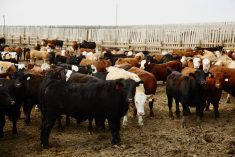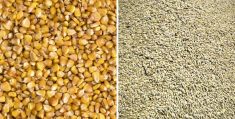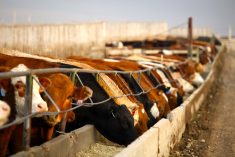The live and feeder cattle futures markets exhibit a behaviour commonly known as “the constellation of prices.” Understanding the price relationship between the live and feeder cattle futures can be invaluable when deciding to market calves or implement some type of hedging strategy using the price insurance. In this article, I’m going to discuss how the nearby live cattle market can influence the price structure of the deferred live cattle contracts and the feeder cattle futures.
Throughout the winter and spring, the U.S. Midwest has been plagued by adverse weather which has resulted in significant volatility in the cattle futures. The live cattle futures have been trading near 52-week highs as the market incorporates a risk premium due to the uncertainty in production. At the same time, the August feeder cattle futures have been moving in tandem, although the fundamentals are quite burdensome for the August time frame. It’s important for cow-calf producers to realize the market price today is not going to be the same tomorrow. This is obvious but knowing how the nearby fundamentals influence the deferred price structure will help enhance profitability for your operation.
Read Also

Body condition, nutrition and vaccination for brood cows
One of the remarkable events of the past century related to ranching has been the genetic evolution of brood cows….
The constellation of prices is when the deferred live cattle futures and the feeder cattle futures move in tandem with the nearby live cattle contract. One can say that the nearby live cattle contract is the leader of the overall cattle complex. I will use two examples to explain the above theory.
I’ll use the live cattle futures as the first example. During June 2018, the June live cattle futures traded from $103 to $110 while the April 2019 live cattle futures traded in the range of $114 to $116. The fundamentals during the summer of 2018 were quite burdensome and this caused the April 2019 contract to trade at the lower levels. During the early spring of 2019, the April live cattle futures were trading from $125 to $130. Beef production was significantly lower during the first quarter of 2019 compared to the second quarter of 2018. When the April live cattle futures became the main price discovery month, weather became a more important factor and carcass weights were lower than expected. These factors could not have been foreseen back in June 2018. The main point is that during June 2018, the nearby live cattle futures pulled down the deferred April 2019 contract.
The nearby live cattle contract can also influence the deferred feeder cattle futures. I’ve included a chart of the June live cattle futures with an overlay of the August feeder cattle futures. Notice how the two contracts move in tandem. During the spring of 2019, the June live cattle futures experienced a significant rally when overland flooding and adverse weather affected U.S. beef production. This strength in the nearby live cattle futures spilled over into the August feeder cattle futures.
The fundamentals are significantly different between the June live cattle futures and the August feeders but the price pattern is very similar. This is an opportunity for cow-calf producers to take protection on their fall marketings. Later in May, when weather improves and beef production increases, the live and feeder cattle futures will come under pressure. During July, the August feeder cattle futures will be factoring in a surge in feeder cattle supplies. It will be very difficult for the August feeder cattle to remain at the higher levels.
Second, feeding margins are in positive territory in the U.S. while Alberta margins are hovering near break-even. During the summer, U.S. feedlot margins will move into negative territory, which will also weigh on the feeder market. These factors, along with other influences, will drive the feeder cattle market lower. The factors influencing the feeder cattle futures in spring will be significantly different during the fall.
Even though cow-calf producers are planning to market their feeder cattle in the fall, it is important to be aware of the nearby live cattle fundamentals. The fundamentals in the nearby position can influence the deferred price structure, providing a good opportunity to implement a hedging or risk management strategy.
















